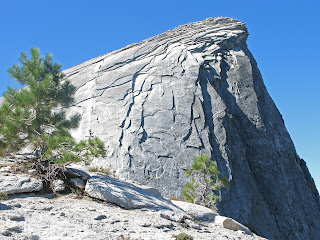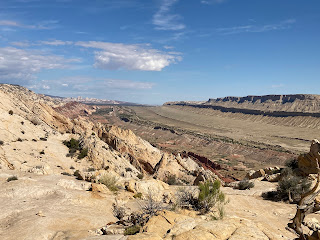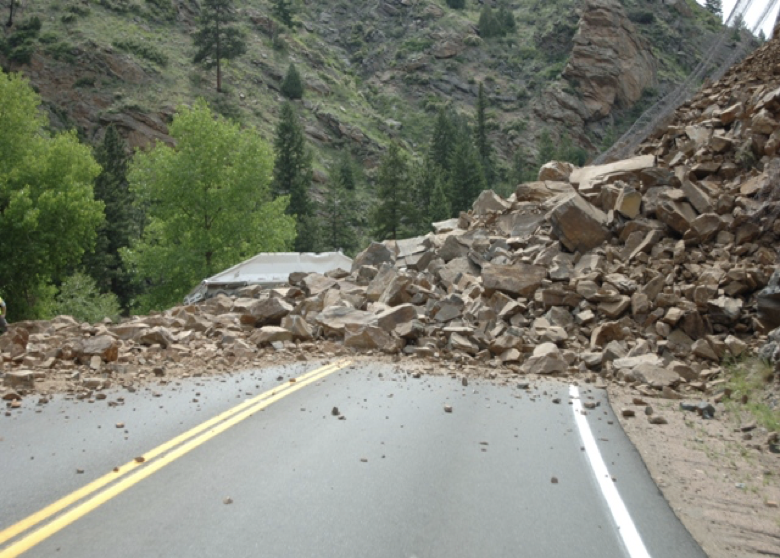Either in class or in the field I notice that we have a tendency to describe rock units as homogeneous rock types. Sure, we throw in little bits of sandy limestone or shaley sandstone or what ever, but what many people hear is just this rock is a large chunk of sandstone. Never mind that we can find little bits of all kinds of things in there.
Just like we would be amiss if we assumed that complex biological systems would never be strictly homogenous or even straight binary, we should never expect the rock outcrop in front of us to contain only one type of material.
Case in point. This week I was wandering around the Temples area in Capitol Reef National Park. These towering monoliths are mostly Entrada sandstone, the same rock unit that makes up most of the arches in Arches National Park. But they really don’t look similar, how can they be the same?
Here the Temple of the Sun and the Moon show a highly eroded monolith that looks like a heavy rain could wash the whole thing away.
Here, at the windows area in Arches National Park, the same rock unit, Entrada sandstone, looks pretty solid, except for that big hole in the middle, and ready to stand for a few more millennia.
The key is during deposition. The Capitol Reef rocks were laid down much closer to the ocean as compared to the Arches sandstone. Otherwise, they are the same age and composed of the same stuff. Just a little difference in placement makes a big difference in presentation.
So, remember when studying the natural world, most anything is not as simple as we want to make it.





























